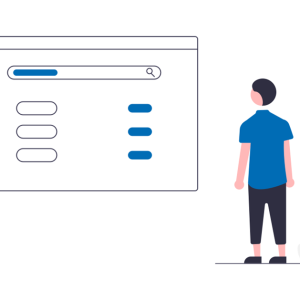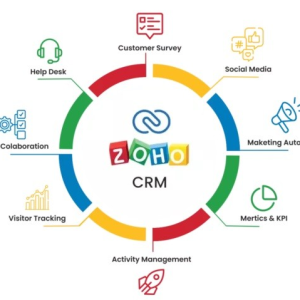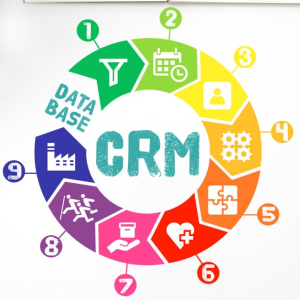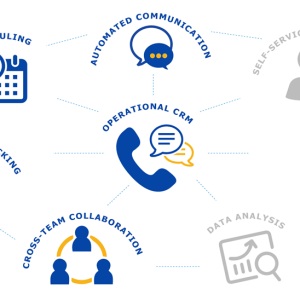Introduction
In this article, we’ll provide a complete guide to designing a website using WordPress plugins, from choosing the right theme to adding features and customizing your navigation bar. We’ll start with the basics, like installing WordPress and setting up your hosting account, then move on to more advanced topics like creating pages and posts, adding images and videos, and customizing your site’s design. By the end of this article, you’ll have everything you need to create free wordpress website that is both beautiful and functional.
Installing WordPress
The first step to create free WordPress website is to install WordPress on your web server. If you’re not sure how to do this, don’t worry – it’s quite easy. Just follow these simple steps:
1. Download the WordPress installation package from https://wordpress.org/download/
2. Unzip the package to a folder on your hard drive.
3. Create a database for WordPress on your web server, as well as a MySQL user who has access to that database.
4. Edit the wp-config.php file in the WordPress installation folder, adding your database information.
5. Upload the entire WordPress folder to your web server.
6. Visit http://example.com/wp-admin/install.php in your web browser, replacing example.com with your domain name. This will begin the WordPress installation process.
7. Follow the on-screen instructions to complete the installation.
Designing Your Website
Now that you have WordPress installed, it’s time to start designing your website! The first thing you’ll need to do is choose a theme. This will determine the overall look and feel of your site, so take some time to browse through the available options and find one that you like.
Once you’ve chosen a theme, it’s time to start adding content to your site. You can do this by creating new pages and posts. To create a new page, go to the Pages > Add New section of your WordPress dashboard. Enter the title of your page in the input field at the top, and then start writing your content in the editor below.
When you’re finished, click the Publish button to make your page live. You can also create posts in a similar way by going to the Posts > Add New section of your dashboard. Just like with pages, you’ll need to enter a title and then start writing your content.
Both pages and posts can be customized with a variety of different plugins. For example, you can install a plugin like Yoast SEO to help optimize your site for search engines, or a plugin like WPForms to add forms to your website.
You can also add other features to your website by installing plugins. For example, if you want to add a forum to your site, you can install the bbPress plugin. Or, if you want to add an online store, you can install the WooCommerce plugin.
There are thousands of different plugins available for WordPress, so no matter what type of website you’re looking to create, you should be able to find the plugins you need
Customizing Your Navigation Menu
The navigation menu is one of the most important aspects of your website, as it allows visitors to browse through your content. By default, WordPress will display a list of your pages in the navigation menu. However, you can also add custom links to the menu, as well as change the order of the items.
To customize your navigation menu, go to the Appearance > Menus section of your WordPress dashboard. Here, you can add new items to your menu or rearrange the existing ones. Simply drag and drop the items into the order you want them to appear.
When you’re finished, click the Save Menu button. Your changes will now be live on your website.
10 WordPress PLugins You Might Need
You have learned about how to install WordPress and how to design your website. However, your website will not be complete without plugins. Plugins are tools that add extra features to your website. You can look into the various types of plugins at https://wordpress.org/plugins/
However, In this section, we will recommend 10 WordPress plugins that you might need:
1. Yoast SEO WordPress Plugin

This plugin at https://wordpress.org/plugins/wordpress-seo/ helps you to optimize your website for search engines. Using Yoast SEO, you can add meta tags, titles, and descriptions to your pages and posts.
How to use Yoast SEO:
First, install and activate the plugin. For more information, keep reading, in the next section you will find a guide on how to install a WordPress plugin. Once the plugin is activated, go to the SEO > General tab in your WordPress dashboard and click on the Features tab. Here, you will see a list of features that Yoast SEO offers. Enable the ones you want to use and then click on the Save Changes button.
2. WPForms WordPress Plugin

This plugin allows you to create forms for your website.
How to use WPForms:
- Install and activate the WordPress plugin.
- Create a new form.
- Add the fields you want to include in your form.
- Configure the settings for your form.
- Embed the form on your website.
Once you have created, you can use WPForms to create contact forms, surveys, or even order forms.
3. Gravity Forms WordPress Plugin

This WordPress plugin is another popular option for creating forms for your website. Gravity Forms allows you to create complex forms with multiple pages and sections.
How to use Gravity Forms:
1. Choose the type of form you want to create. Gravity Forms offers a variety of form types, including contact forms, surveys, registration forms, and more.
2. Select the fields you want to include in your form. Gravity Forms provides a variety of field types, including text fields, drop-down menus, radio buttons, and more.
3. Configure your form settings. Gravity Forms allows you to specify how you want your form to be submitted, such as by email or through a webhook.
4. Add your form to a page on your website. Gravity Forms makes it easy to add your forms to any page on your website.
By doing so, you can take advantage of the many features that Gravity Forms offers, such as the ability to create complex forms with multiple pages and sections. Additionally, Gravity Forms allows you to specify how you want your form to be submitted, such as by email or through a webhook. Overall, Gravity Forms is a powerful plugin that can help you create sophisticated forms! So don’t forget to use this plugin for your website.
4. Contact Form 7 WordPress Plugin

Contact form 7 is a cWordPress plugin for creating simple contact forms.
How to use Contact Form 7:
1. Install the plugin. You can install Contact Form 7 through the WordPress plugin repository.
2. Activate the plugin. Once installed, you’ll need to activate Contact Form 7 through your WordPress dashboard.
3. Create a contact form. To create a contact form, you’ll need to use the Contact Form 7 tag generator.
4. Add the contact form to a page on your website. Once you’ve created your contact form, you can add it to any page on your website using the shortcode provided by Contact Form 7.
By doing so, you can take advantage of the many features that Contact Form 7 offers, from creating custom fields to adding CAPTCHA protection.
5. WP Super Cache WordPress Plugin

This plugin speeds up your website by caching your pages and posts. Caching means that your pages and posts are saved as static files, which can be quickly loaded by visitors.
How to use WP Super Cache:
1. Install the plugin. You can install WP Super Cache through the WordPress plugin repository.
2. Activate the plugin. Once installed, you’ll need to activate WP Super Cache through your WordPress dashboard.
3. Configure the plugin settings. WP Super Cache provides a variety of settings that you can use to customize how your pages and posts are cached.
4. Add the caching code to your website. WP Super Cache provides a piece of code that you’ll need to add to your website. This code will ensure that your pages and posts are cached properly.
Overall, WP Super Cache is a great plugin for speeding up your website!
6. W3 Total Cache WordPress Plugin

Another caching plugin that can speed up your website.
How to use W3 Total Cache
You can do this by following the same steps for W3 Total Cache as W3 Super Cache.
7. Jetpack WordPress Plugin

This plugin provides a variety of features for your website, including social media integration, security, and performance enhancements.
How to use Jetpack:
1. Install the plugin. You can install Jetpack through the WordPress plugin repository.
2. Activate the plugin. Once installed, you’ll need to activate Jetpack through your WordPress dashboard.
3. Connect your site to WordPress.com. To take advantage of all the features offered by Jetpack, you’ll need to connect your website to WordPress.com.
4. Configure the plugin settings. Jetpack provides a variety of settings that you can use to customize how your website works.
5. Use the features provided by Jetpack. Jetpack offers a wide range of features, from social media integration to security enhancements. Be sure to take advantage of all the features that Jetpack has to offer!
Overall, Jetpack is a great plugin that provides a variety of features for your website. So don’t forget to use it on your site.
8. Google Analytics WordPress Plugin

This plugin allows you to collect data about your website traffic using Google Analytics.
How to use Google Analytics for WordPress:
1. Install the plugin. You can install Google Analytics for WordPress through the WordPress plugin repository.
2. Activate the plugin. Once installed, you’ll need to activate Google Analytics for WordPress through your WordPress dashboard.
3. Configure the plugin settings. Google Analytics for WordPress provides a variety of settings that you can use to customize how your website traffic is tracked.
4. Add your Google Analytics tracking code. Once you’ve configured the plugin settings, you’ll need to add your Google Analytics tracking code to your website.
5. View your website traffic data. Once you’ve added your Google Analytics tracking code, you can view your website traffic data by logging into your Google Analytics account.
Overall, Google Analytics for WordPress is a great plugin for tracking your website traffic. So be sure to use it on your site.
9. AKismet WordPress Plugin

This plugin helps you protect your website from spam comments.
How to use Kismet:
1. Install the plugin. You can install Kismet through the WordPress plugin repository.
2. Activate the plugin. Once installed, you’ll need to activate Kismet through your WordPress dashboard.
3. Configure the plugin settings. Kismet provides a variety of settings that you can use to customize how your website is protected from spam comments.
4. Use the features provided by Kismet. Kismet offers a variety of features, from comment filtering to comment blacklisting. Be sure to take advantage of all the features that Kismet has to offer!
Sites with spam comments are less fun to visit and can hurt rankings. But now you have Kismet, a plugin that will keep out the bad stuff while letting in only good ones!
10. Lazy Load WordPress Plugin

This plugin speeds up your website by loading images only when they’re visible to the user.
How to use Lazy Load:
1. Install the plugin. You can install Lazy Load through the WordPress plugin repository.
2. Activate the plugin. Once installed, you’ll need to activate Lazy Load through your WordPress dashboard.
3. Configure the plugin settings. Lazy Load provides a variety of settings that you can use to customize how your website’s images are loaded.
4. Use the features provided by Lazy Load. Lazy Load offers a variety of features, from image preloading to loading images only when they’re visible to the user.
Be sure to take advantage of all the features that Lazy Load has to offer!
Lazy Load is a great plugin for speeding up your website. So be sure to use it on your site.
These are just a few of the many plugins available for WordPress. With so many plugins to choose from, it can be difficult to know which ones you need. However, these 10 plugins are a good starting point for most websites.
Steps to install a WordPress plugin
We have already mentioned the steps for each plugin, but if you want a summary, here are the steps: again, but generalized!
1. Go to the WordPress plugin repository and find the plugin you want to install.
2. Download the WordPress plugin to your computer.
3. Log into your WordPress website and go to the “Plugins” section of your dashboard.
4. Click “Add New” and then click “Upload Plugin.”
5. Select the plugin file you downloaded and click “Install Now.”
6. Once the plugin is installed, click “Activate Plugin.”
7. Configure the plugin settings as desired.
And that’s it! You’ve successfully installed a WordPress plugin.
Conclusion
That’s everything you need to know about designing a WordPress website! Just remember to take your time and experiment with different themes and plugins to find the perfect combination for your site. And if you ever get stuck, don’t hesitate to reach out to a WordPress expert for help.
And if you need help getting started, 12 Channels is always here. We can help you set up your WordPress website and get it started on the right foot. Reach out to us today to get started!
We hope you enjoyed this article. If so, please share it with your friends and followers! Thanks for reading! Feel free to leave us a comment below.

























